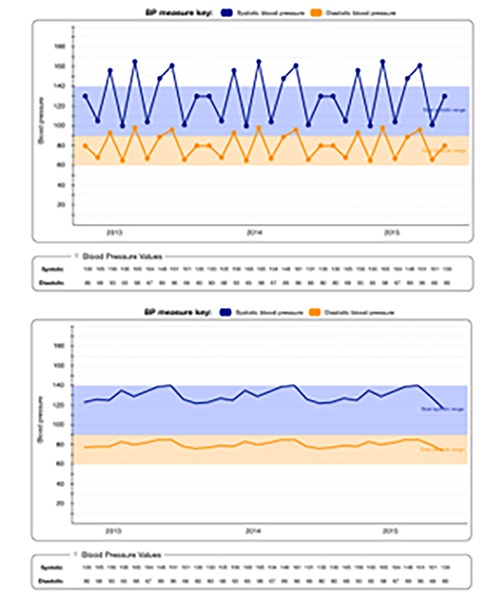Drug Dramatically Reduces Breast Cancer Recurrence
|
By HospiMedica staff writers Posted on 22 Oct 2003 |
A large international trial has found that survivors of early-stage breast cancer who took the drug letrozole (Femara, from Novartis) after completing an initial five years of tamoxifen therapy had almost half the risk of cancer recurrence compared to women taking a placebo. The results were reported in the October 9, 2003, online edition of the New England Journal of Medicine.
The Canadian-led study involved 5,187 women worldwide. The researchers found that when women took letrozole after five years of tamoxifen therapy, they greatly increased their chance of remaining cancer-free. In all, 132 women taking the placebo had their disease recur, compared to 75 on letrozole, reducing the risk of recurrence by 43%. After four years of participating in the trial, 13% of the women on placebo but only 7% of those on letrozole had a recurrence of cancer. Deaths from breast cancer were also reduced by half. The trial was halted early because of the dramatic positive results.
Although tamoxifen is widely used to prevent breast cancer recurrence in postmenopausal women, the drug stops being effective after five years because tumors appear to become resistant to it. Letrozole is one of a new class of drugs called aromatase inhibitors. These work by limiting the ability of an enzyme called aromatase to produce estrogen, which stimulates the growth of many breast cancers. Astra-Zeneca has a drug of the same type called anastrozole (Arimidex).
"More than half of women who develop recurrent breast cancer do so more than five years after their original diagnosis,” said Paul Goss, M.D., of Princess Margaret Hospital (Toronto, Canada; www.uhealthnet.on.ca). "Our study ushers in a new era of hope by cutting these ongoing recurrences and deaths from breast cancer after tamoxifin by almost one-half.” Dr. Goss conceived and chaired the international trial, which was coordinated by the National Cancer Institute of Canada Clinical Trials Group in partnership with the US National Cancer Institute and its Clinicial Trials Cooperative Group.
Related Links:
Princess Margaret Hospital
The Canadian-led study involved 5,187 women worldwide. The researchers found that when women took letrozole after five years of tamoxifen therapy, they greatly increased their chance of remaining cancer-free. In all, 132 women taking the placebo had their disease recur, compared to 75 on letrozole, reducing the risk of recurrence by 43%. After four years of participating in the trial, 13% of the women on placebo but only 7% of those on letrozole had a recurrence of cancer. Deaths from breast cancer were also reduced by half. The trial was halted early because of the dramatic positive results.
Although tamoxifen is widely used to prevent breast cancer recurrence in postmenopausal women, the drug stops being effective after five years because tumors appear to become resistant to it. Letrozole is one of a new class of drugs called aromatase inhibitors. These work by limiting the ability of an enzyme called aromatase to produce estrogen, which stimulates the growth of many breast cancers. Astra-Zeneca has a drug of the same type called anastrozole (Arimidex).
"More than half of women who develop recurrent breast cancer do so more than five years after their original diagnosis,” said Paul Goss, M.D., of Princess Margaret Hospital (Toronto, Canada; www.uhealthnet.on.ca). "Our study ushers in a new era of hope by cutting these ongoing recurrences and deaths from breast cancer after tamoxifin by almost one-half.” Dr. Goss conceived and chaired the international trial, which was coordinated by the National Cancer Institute of Canada Clinical Trials Group in partnership with the US National Cancer Institute and its Clinicial Trials Cooperative Group.
Related Links:
Princess Margaret Hospital
Latest Patient Care News
- Portable Biosensor Platform to Reduce Hospital-Acquired Infections
- First-Of-Its-Kind Portable Germicidal Light Technology Disinfects High-Touch Clinical Surfaces in Seconds
- Surgical Capacity Optimization Solution Helps Hospitals Boost OR Utilization

- Game-Changing Innovation in Surgical Instrument Sterilization Significantly Improves OR Throughput
- Next Gen ICU Bed to Help Address Complex Critical Care Needs
- Groundbreaking AI-Powered UV-C Disinfection Technology Redefines Infection Control Landscape
- Clean Hospitals Can Reduce Antibiotic Resistance, Save Lives
- Smart Hospital Beds Improve Accuracy of Medical Diagnosis
- New Fast Endoscope Drying System Improves Productivity and Traceability
- World’s First Automated Endoscope Cleaner Fights Antimicrobial Resistance
- Portable High-Capacity Digital Stretcher Scales Provide Precision Weighing for Patients in ER
- Portable Clinical Scale with Remote Indicator Allows for Flexible Patient Weighing Use
- Innovative and Highly Customizable Medical Carts Offer Unlimited Configuration Possibilities
- Biomolecular Wound Healing Film Adheres to Sensitive Tissue and Releases Active Ingredients
- Wearable Health Tech Could Measure Gases Released From Skin to Monitor Metabolic Diseases
- Wearable Cardioverter Defibrillator System Protects Patients at Risk of Sudden Cardiac Arrest
Channels
Critical Care
view channel
Breakthrough AI Technology Accurately Assesses Heart Failure Severity
Heart failure (HF) is a complex condition where the heart cannot effectively pump blood to meet the body’s needs due to underlying medical issues. It is marked by recurring episodes and frequent hospitalizations.... Read more
New Approach to Visualizing Blood Pressure Data Can Help Better Manage Hypertension Patients
Sometimes, a patient’s blood pressure may be elevated in a doctor's office but normal at home, a phenomenon known as white coat hypertension. It is estimated that 10% to 20% of high blood pressure diagnoses... Read moreSurgical Techniques
view channel
DNA Origami Improves Imaging of Dense Pancreatic Tissue for Cancer Detection and Treatment
One of the challenges of fighting pancreatic cancer is finding ways to penetrate the organ’s dense tissue to define the margins between malignant and normal tissue. Now, a new study uses DNA origami structures... Read more
Pioneering Sutureless Coronary Bypass Technology to Eliminate Open-Chest Procedures
In patients with coronary artery disease, certain blood vessels may be narrowed or blocked, requiring a stent or a bypass (also known as diversion) to restore blood flow to the heart. Bypass surgeries... Read more
Intravascular Imaging for Guiding Stent Implantation Ensures Safer Stenting Procedures
Patients diagnosed with coronary artery disease, which is caused by plaque accumulation within the arteries leading to chest pain, shortness of breath, and potential heart attacks, frequently undergo percutaneous... Read more
World's First AI Surgical Guidance Platform Allows Surgeons to Measure Success in Real-Time
Surgeons have always faced challenges in measuring their progress toward surgical goals during procedures. Traditionally, obtaining measurements required stepping out of the sterile environment to perform... Read moreHealth IT
view channel
Printable Molecule-Selective Nanoparticles Enable Mass Production of Wearable Biosensors
The future of medicine is likely to focus on the personalization of healthcare—understanding exactly what an individual requires and delivering the appropriate combination of nutrients, metabolites, and... Read more
Smartwatches Could Detect Congestive Heart Failure
Diagnosing congestive heart failure (CHF) typically requires expensive and time-consuming imaging techniques like echocardiography, also known as cardiac ultrasound. Previously, detecting CHF by analyzing... Read moreBusiness
view channel
Expanded Collaboration to Transform OR Technology Through AI and Automation
The expansion of an existing collaboration between three leading companies aims to develop artificial intelligence (AI)-driven solutions for smart operating rooms with sophisticated monitoring and automation.... Read more

















